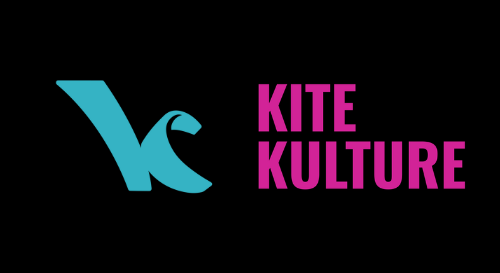So, you’ve decided to take up kitesurfing—great choice! It’s an adrenaline-pumping, wind-powered sport that lets you glide over the water, jump high into the air, and experience pure freedom. But before you grab a kite and head to the beach, there are a few things you need to know.
This beginner’s guide covers everything from essential gear to safety tips and how to get started the right way.
1. What is Kitesurfing?
Kitesurfing (also called kiteboarding) is a watersport where you use a kite and a board to glide across the water while being pulled by the wind. Unlike surfing, where you wait for waves, kitesurfing allows you to ride almost any body of water—as long as there’s enough wind!
There are different styles of kitesurfing, including:
• Freeride – Just cruising around and having fun.
• Freestyle – Performing jumps and tricks.
• Big Air – Going as high as possible.
• Wave Riding – Using a directional board to surf waves.
For beginners, it’s best to start with freeride kiting in calm, flat water before moving on to tricks or waves.
2. Essential Kitesurfing Gear
Before you hit the water, you’ll need the right equipment. Here’s what you need to get started:
![]() Kite
Kite
The kite is your engine. Beginner kites are typically larger and more stable to help with control. Popular kite brands include Reedin, Duotone, Core, Ozone and Slingshot.
![]() Control Bar & Lines
Control Bar & Lines
This is how you steer and power the kite. The bar connects to the kite with four or five lines, and you can depower it to control speed and power.
![]() Kiteboard
Kiteboard
Your board size depends on your weight and wind conditions. Beginners usually start with a larger twin-tip board because it’s easier to balance on.
![]() Harness
Harness

A harness connects you to the kite, distributing the pull across your body. Most beginners use a waist harness for comfort and better control.
![]() Safety Gear
Safety Gear
• Helmet – Protects your head from crashes.

• Impact Vest – Helps with flotation and absorbs impacts.

• Wetsuit or Rash Guard – Needed for warmth and sun protection.
![]()
• Leash & Safety Release System – Lets you release the kite in an emergency.

3. Finding the Right Conditions for Learning
Not all beaches are suitable for learning to kitesurf. Here’s what to look for:
![]() Consistent wind between 12-20 knots (Not too light, not too strong).
Consistent wind between 12-20 knots (Not too light, not too strong).
![]() Flat, shallow water (Easier to learn in than big waves).
Flat, shallow water (Easier to learn in than big waves).
![]() A spacious, uncrowded beach with a large launch area.
A spacious, uncrowded beach with a large launch area.
![]() No obstacles like rocks, trees, or buildings nearby (They can disrupt the wind or be dangerous).
No obstacles like rocks, trees, or buildings nearby (They can disrupt the wind or be dangerous).
Some of the best beginner-friendly kite spots include Tarifa (Spain), Cabarete (Dominican Republic), Maui (Hawaii), and Hatteras (North Carolina).
4. Should You Take Lessons? (YES, 100%)
If you take away one tip from this guide, let it be this: Take professional kitesurfing lessons before trying it on your own.
Kitesurfing involves powerful forces of wind and water, and learning the correct techniques will keep you safe and make progress much faster. A certified kite school will teach you:
• How to control the kite before getting on the board.
• Proper launching and landing techniques.
• Self-rescue skills in case something goes wrong.
• Water start techniques to get up and riding.
Lessons usually take 6-10 hours spread over a few days. By the end, you’ll be able to ride downwind and control the kite safely.
5. Safety Tips for Beginner Kitesurfers
Kitesurfing is exciting, but safety should always come first. Here are some key safety rules:
![]() Never kite alone – Always have a buddy or be near other kiters.
Never kite alone – Always have a buddy or be near other kiters.
![]() Don’t launch in offshore winds – If the wind is blowing away from shore, you could get stuck at sea.
Don’t launch in offshore winds – If the wind is blowing away from shore, you could get stuck at sea.
![]() Know your safety release – Practice using your quick release system before you need it.
Know your safety release – Practice using your quick release system before you need it.
![]() Check the forecast – Avoid kiting in storms or gusty wind conditions.
Check the forecast – Avoid kiting in storms or gusty wind conditions.
![]() Give other kiters space – Learn right-of-way rules to avoid collisions.
Give other kiters space – Learn right-of-way rules to avoid collisions.
6. How Long Does It Take to Learn Kitesurfing?
Most people take 10-20 hours to go from beginner to independent rider. The learning curve depends on:
• Your balance and coordination (surfers and snowboarders learn faster).
• Wind conditions (stronger, gustier winds make it harder).
• How often you practice (consistent sessions speed up learning).
The key is to be patient and focus on mastering the basics before trying advanced moves.
7. What’s Next? Progressing in Kitesurfing
Once you can ride upwind, you can start progressing to:
• Jumping – Small hops, then bigger boosts.
• Transitions – Turning smoothly without stopping.
• Freestyle tricks – Spins, grabs, and handle passes.
• Wave riding – Using a surfboard-style kiteboard.
The more you practice, the more fun kitesurfing becomes!
Ready to Start Your Kitesurfing Journey?
Kitesurfing is one of the most thrilling and rewarding sports you can learn. With the right gear, lessons, and practice, you’ll be riding the waves and catching air in no time.
Want to look good while learning? Check out Kite Kulture’s apparel collection for stylish and comfortable kitesurfing gear. See you on the water!

